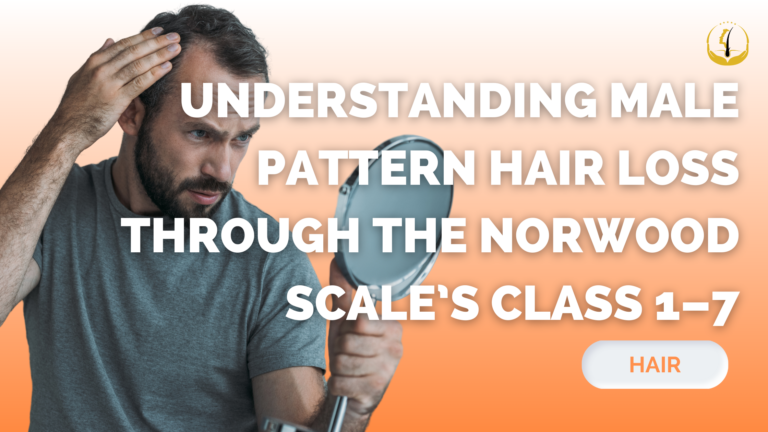
Embarking on life’s journey inevitably entails change, and one such transformation that many men encounter is male pattern hair loss. This widespread condition affects millions globally, and witnessing the gradual thinning and receding of once-lush hair can be disheartening. However, gaining insights into the progression of male pattern hair loss through the Norwood Scale provides a valuable tool for understanding and making informed decisions about managing this natural process. Let’s delve into the details of the Norwood Scale’s Class 1–7 to comprehend this transformation.
GLOJAS Specialist Clinic is a leading MOH-licensed, LCP-certified centre for hair transplant Malaysia, backed by over 27 years of surgical expertise. Our procedures are performed by NSR-registered surgeons using advanced FUE and FUT techniques, ensuring safe, natural, and medically proven results trusted by patients across Malaysia.
Class 1: The Quintessential Hairline
In Class 1 on the Norwood Scale, individuals exhibit the quintessential hairline, enjoying a full head of hair without signs of loss. While fortunate, it’s crucial to remain aware that hair loss can initiate at any time, emphasizing the need for vigilance in monitoring potential changes.
Class 2: The Slight Recession
Advancing to Class 2, a mild receding hairline emerges in a subtle ‘M’ shape. This might go unnoticed, but heightened awareness of any further changes is advisable at this stage.
Class 3: The First Notable Changes
Class 3 marks the stage where hair loss becomes more apparent. A deeper ‘M’ shape develops, and thinning becomes noticeable at the temples. Many individuals begin to recognize their hair loss at this point, prompting consideration of professional advice from a hair specialist.
Class 4: Advancing Recession
In Class 4, the hair loss pattern advances with a more pronounced recession. Significant thinning at the temples and the emergence of a bald spot or “vertex” at the crown become evident. The impact on overall appearance is more noticeable, leading some men to explore hair restoration options.
Class 5: The Widening Baldness
Class 5 presents a widening bald area on the crown, accompanied by further recession of the hairline. Although hair loss is more apparent, there’s still enough hair in the donor area for surgical hair restoration to be a viable option for many individuals.
Class 6: Thinning Bridge
Reaching Class 6, the hair loss bridge between the receding hairline and the crown becomes thinner. While the donor area’s hair supply may be limited for some, surgical hair restoration remains a potential solution, contingent on individual hair characteristics.
Class 7: The Advanced Stage
At Class 7, male pattern hair loss reaches its most advanced stage. A band of hair along the sides and back of the head is all that remains, as the bald areas on the crown and hairline merge. Hair restoration options may be limited due to donor hair scarcity, making non-surgical solutions like hairpieces or embracing the bald look more popular choices.
Embracing the Journey
Understanding male pattern hair loss through the Norwood Scale’s Class 1–7 can alleviate concerns and empower individuals to embrace this natural change with confidence. Remember that hair loss is common and often part of the natural aging process. Seeking advice from a qualified hair specialist can provide valuable insights and potential solutions tailored to individual needs.
Embrace your unique hair loss journey
Whether at the early stages of Class 1 or facing the more advanced Class 7, there’s no one-size-fits-all approach to managing male pattern hair loss. Embrace your unique hair loss journey, explore tailored options, and remember true confidence transcends hair, rooted in self-acceptance and embracing life’s changes.
